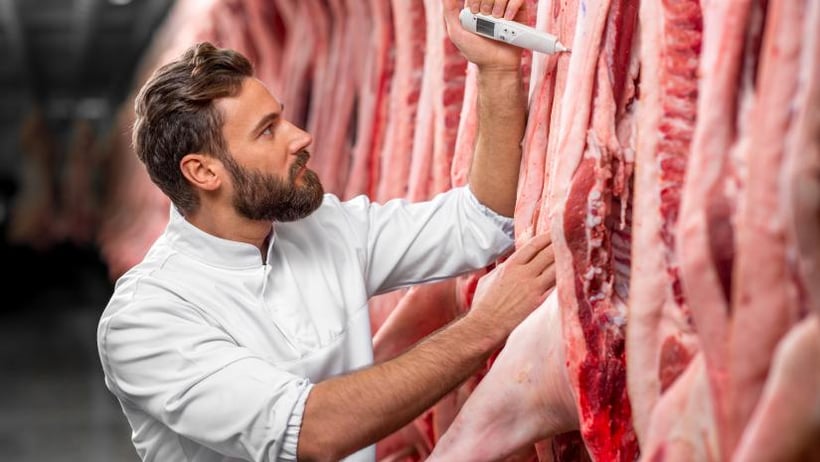
Temperature control
At certain temperatures, microorganisms can multiply very quickly to harmful levels, which increases the risk of food-borne illness. By keeping food at low or high temperatures, we can stop or slow down the growth of these dangerous pathogens.
The temperature range in which pathogens grow most quickly is called the “Temperature Danger Zone”. When working with food, it’s important to minimize the amount of time that food spends in the Temperature Danger Zone. Temperature control is the most effective method of reducing the growth of harmful pathogens in food.
There are four food temperature zones that are important to know:
- 60°C / 140°F and above is known as the hot food zone. As a general rule, food should always be cooked to 74°C / 165°F (or more) but must not drop below 60°C / 140°F when being displayed or served.
- 0°C to 4°C / 32°F to 40°F is the cold food zone and is the normal temperature for most refrigerators.
- Frozen food is normally held at -18°C / 0°F or lower.
- This means that the Temperature Danger Zone for food is between 4°C and 60°C / 40°F to 140°F.
Time control
High-risk food must be thrown out after it’s been in the Temperature Danger Zone for two hours. This time is cumulative, meaning that it’s the total time the food has spent in the Temperature Danger Zone.
Food must always be thawed, cooked, cooled, reheated and served at the correct temperatures in order to minimize the amount of time spent in the Temperature Danger Zone.
Establishing control methods
Inadequate time and temperature control is one of the leading causes of food-borne illness, which is why food safety training courses cover this topic in detail.
When you complete a food handling certificate course, you'll gain a better understanding of:
- temperature zones and time control for potentially hazardous foods (also called high-risk foods)
- different types of thermometers used in a commercial kitchen
- how to calibrate and use a probe thermometer
- how to keep food out of the Temperature Danger Zone at every step of production (delivery, storage, thawing, preparing, cooking and serving)
Specific rules and procedures with regards to time and temperature should be meticulously documented in your Food Safety Plan.
Food Safety Plans are critically important for any food business and help to protect consumers from food safety risks, including food poisoning or allergic reactions. In most provinces and territories, Food Safety Plans are required by law and should be based on the seven principles of HACCP.
Learn more about Food Safety Plans and the seven principles of HACCP in the CIFS HACCP Food Safety Plan Kit. This kit was developed to help food business owners create and develop compliant Food Safety Plans tailored to their business needs.





